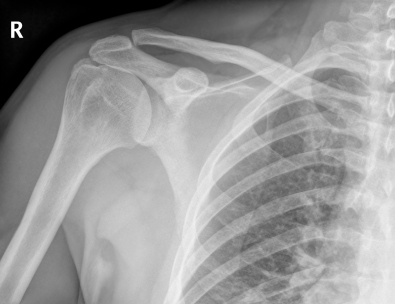This helpful article presents an overview of the main problems related to the shoulder and discusses the causes of pain and possible treatments. This will be of help to anyone who has experienced pain in their shoulder but does not know the cause.
Diagnosis and Treatment of Shoulder Pain - Contents
- Introduction
- The shoulder joint
- What to expect from your first visit to a shoulder specialist
- Pain in the shoulder
- Examining a painful shoulder
- Diagnosis for a painful shoulder
- Investigations and tests for a painful shoulder
- What might be causing pain in the shoulder?
- Treatments for a painful shoulder
- What to do if your shoulder has been hurting
Introduction to Shoulder Pain Specialist
In this article I am going to talk about some of the things that can make our shoulders hurt and what sort of things to expect if you visit a shoulder Surgeon. I won’t include fresh injuries here.
Don’t forget, even though you consult a shoulder Surgeon, the chances are that you won’t actually need an operation! Most of my work doesn’t involve surgery. It’s best to think of a Surgeon as a Shoulder Specialist who can also operate if needed.
The shoulder joint
The shoulder is a ball-and-socket joint, rather like a golf ball sitting on a tee. A set of muscles, the Rotator Cuff, connects the shoulder blade to the Humerus and holds things together. A capsule, some ligaments and little flange around the edge of the socket called the Labrum help them. A tendon passes right through the joint from the Biceps muscle. The whole thing sits underneath another plate of bone called the Acromion, separated from it by a thin filmy structure called the Bursa.
With so many working parts, our shoulders are rather prone to problems. If your shoulder breaks down, one of the first things you’ll probably notice is that it hurts. You may also notice that something doesn’t work properly.
What to expect from your first visit to a shoulder specialist
I can tell a lot about what’s wrong from what you tell me about the pain. I need to know where you feel it, what positions you are in and what you’re doing when it hurts. I’ll ask how long it’s been hurting and what treatments, if any, you’ve had. How much exercise do you take? Sometimes there’s been a single event, like a fall. Other times the pain just comes on. Pain at night is important, because it can stop you from sleeping properly. I want to know how bad the pain is and what can you not do because of it. In this way I can build up a picture of the pain, and this starts the process of making a diagnosis.
Pain in the shoulder
There are some regular patterns to look for:
- Vague pain in the outer part of the upper arm as you lift is typical of Rotator Cuff trouble
- Pain at the end of the collarbone when you lie on that side can indicate a problem in the Acromio-Clavicular joint
- Sudden severe pain when you move even a tiny bit might be Calcific Tendonitis
By the end of the talking part of a consultation I’ve usually got a pretty good idea of what might be the matter. General health questions follow, to get the ‘bigger picture’, and then I’ll examine you.
Examining a painful shoulder
I spend a while just looking. I’m studying posture, muscle size, swellings, scars, positioning. It’s all useful information.
Next I’ll touch your shoulder. Some parts of the shoulder are easy to reach, like the collarbone and Rotator Cuff, where tenderness can indicate a problem. Other parts of the shoulder are quite deep down so I can’t feel them.
Asking you to move your shoulder around comes next. I have some general things to check, like how far you can reach in certain directions. All the time, I’m still watching your posture, the rhythm of your movements and assessing the strength.
There are some special manoeuvres to ‘test out’ my initial idea of what’s wrong. There are a whole host of these that are very specific to each of the muscles, tendons and other structures.
Sometimes other parts may be causing pain you feel in your shoulder. Your neck is a good example: a trapped nerve here can cause pain felt anywhere between your shoulder and fingertips. I may have to examine these places.
Diagnosis for a painful shoulder
By now, I have a diagnosis in mind as I think I know what’s wrong.
Only a hundred years ago, that was the end of your consultation. Diagnosis was based only on what the doctor found. There was no way to prove whether they were right, except whether you got better or not.
Investigations and tests for a painful shoulder
Happily, science has advanced and now I have a whole bunch of tests I can use to check the diagnosis, in order to be more certain. This is especially useful with the shoulder, where any of the joints, muscles, tendons, nerves and other structures can cause pain.
Here are some of the tests I might need:
X-ray
An X-ray is great because they are really quick and easy for you to have. It gives me pictures of the bones and tells me a lot about the skeleton. As it only takes a few minutes, you can usually have an X-ray there and then.
CT (Computerised Tomography)
This is like a 3D X-ray. I can see the bone anatomy in greater detail. Again, it’s quick and usually done on the same day.
MRI (Magnetic Resonance Imaging)
This is a brilliant tool for investigating shoulders. It gives me really detailed images of the soft tissues, not just the bones and I can look from different directions. Having an MRI takes at least half an hour to do, so it’s usually booked for another day.
Arthrogram
At rest, all the layers of the shoulder joint are close together. Putting a little fluid into the joint can help show up damage that can’t be seen with CT and MRI alone.
Ultrasound
This is great for the Rotator Cuff, especially if I just need to know if there’s a tear. It pictures your shoulder as it moves. I can also use it to guide injections too.
EMG (Nerve Tests, Electromyogram)
Sometimes I think the pain might be coming from the nerves near the shoulder. EMG uses electricity to test the function of the nerves and muscles. It takes a while to do, so it’s a separate appointment.
What might be causing pain in the shoulder?
Once all the information from the discussion, examination and tests is put together, I can tell you what is wrong. This is a really critical step, because it determines what treatment you need.
There are many ways to list the things that can cause shoulder pain, but the easiest simply relates to the anatomy.
Rotator Cuff pain

The tendons of the Rotator Cuff are prone to getting brittle and wearing out. The mildest form of this is called Bursitis. Over time, the bones change shape and rub on the tendons, called Impingement. Eventually, the tendons start to tear, and may rip off entirely.
Initially, you’ll feel pain on the outside of your arm when you try to lift. This can become quite severe, but it can also be hard to tell where it hurts. You may feel weak because it hurts to lift, or the tendon may have torn.
Calcific Tendonitis also affects the Rotator Cuff. Here, microscopic crystals form in the tendons, causing excruciating pain.
Frozen Shoulder
In a ‘Frozen Shoulder’ the Capsule becomes greatly thickened and stiffened. This limits movement and is exquisitely painful. Untreated, it can persist for a couple of years, before burning out. This condition is more common in people with diabetes, although it’s often triggered by relatively minor injury.
Acromio Clavicular Joint Pain
This little bump on the top of our shoulder contains a little disc of cartilage. Keen users of gym machines commonly damage the disc and wear the joint out. It hurts to sleep on the bad side, with pain very localised to the bump.
Pain caused by a torn Labrum in the shoulder
The little flange around the socket is crucial to stopping dislocations. It can be torn causing pain deep inside, especially when reaching up or back. Sometimes there’s a clunk. A badly torn Labrum can allow the ball to slide forward, making the whole shoulder feel loose and unreliable.
Inflammation of the Biceps tendon
This tendon runs up the front of the ball in a groove where it can catch and become inflamed.
Shoulder ball-and-socket problems
Osteoarthritis is rare in the shoulder. It typically comes later in life, although collision sport players can develop it younger. At first, there is just an ache on reaching. Over years the shoulder gets stiffer and the pain gets worse.
Treatments for a painful shoulder
As a Shoulder Specialist, I have a range of available treatments and part of my expertise is making the diagnosis, then matching the right type and level of intervention. There’s a place for surgery and sometimes it is the best treatment, but not always.
Reassurance
Patients worry about their shoulder pain for all sorts of reasons. An important part of seeing a Shoulder Specialist is reassurance that they can be treated and will be able to carry on with sport and other activities.
Physiotherapy
Physiotherapy is central to the treatment of a great many shoulder conditions. Sometimes it’s the only treatment required. For some conditions it’s the only treatment that will really work. It helps recovery after surgery and can improve the outcome of surgery if started at the right time. Shoulder Specialists have great links with the best shoulder physiotherapists and are able to advise you on who you should see.
Steroid injections
Steroid injections are good because they can reduce inflammation and control pain. They’re not painful themselves and work quickly but can be temporary. A period of pain relief can confirm the diagnosis and get you by, even if you really need an operation. They can stop pain so you can do your physiotherapy. Although I use them cautiously, they are not as risky as their reputation.
Hydrodilation treatment for Frozen Shoulder
Hydrodilation is specific to Frozen Shoulders. It’s an injection into the joint, under local anaesthetic and x-ray control, to inflate the shoulder capsule. It’s an instant solution for stiff shoulders, with physiotherapy afterwards to stop them stiffening again.
Shockwave Therapy for Shoulder Problems
Sound pulses can be used to break up Calcific Tendonitis into small enough pieces for your own body to manage. It’s a good alternative to surgery for small deposits.
Surgery for Shoulder Problems
Sometimes surgery really is either the best, or the only suitable treatment. Years ago, it was something to fear, but no more. Most operations can be performed via a ‘keyhole’ approach. This is less painful, minimising your down time and leaving only a few tiny marks. You can usually go home the same day. Surgery can be the quickest and most straightforward solution to the problem.
What to do if your shoulder has been hurting
Don’t try to diagnose yourself - you won’t be able to. A lot of different problems in the shoulder produce similar symptoms, yet the treatment can be very different. Don’t think you have the same condition as a friend or relative, just because the symptoms sound similar. It’s crucial to get the diagnosis right, so that you get the correct treatment. Don’t worry that you may need to see a Surgeon as you will only be advised to have surgery if it is right for you and your shoulder problem.





